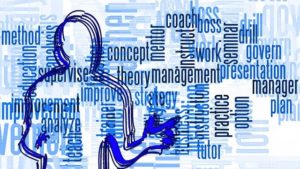“What Leadership Programs Really Work? Components of The Best Leadership Development Programs” – This is the second entry in a series of blogs about the leadership concept of psychological safety.
“Survival of the fittest is not the same as survival of the best. Leaving leadership development up to chance is foolish.” – Morgan McCall
The connection between effective, sustained leadership development and the creation of a climate of psychological safety is becoming increasingly clear. As McKinsey researchers Aaron DeSmet, Kim Rubenstein, Gunnar Schrah, Mike Vierow, And Amy Edmonson recently wrote:
“… our newest research suggests how organizations can foster psychological safety. Doing so depends on leaders at all levels learning and demonstrating specific leadership behaviors that help their employees thrive. Investing in and scaling up leadership-development programs can equip leaders to embody these behaviors and consequently cultivate psychological safety across the organization.”[1]
Their research, and a considerable body of additional evidence, point toward deliberate, long term leadership development as an essential component of a world-class culture. What are the characteristics of this type of leadership development? Put simply, what leadership programs really work? 
Here are four fundamental components of the best leadership development programs:
- There is Senior Leader Buy-In. Few, if any, successful leadership programs begin at the lower levels of the organization. In the most effective programs, senior leaders embrace the need for a comprehensive leadership development program, and then set the example by going through it themselves.
- They Start with the End in Mind. Up front, leaders identify what success looks like. It could be in discrete terms such as a percentage growth in internal promotion rates, front line leader retention, increased productivity, efficiency, safety, etc. There are measurable outcomes the leadership program contributes to.
- There are Individual and Collective Components That Reinforce Each Other. The best programs I’ve observed include one-on-one executive coaching, team development, and highly interactive learning laboratories. Leaders learn by doing, as individuals and as members of a group.
- Growing Leaders is Seen as a Journey, not a Destination. The best leadership development is a continuum, where leaders from the top down are constantly evaluating themselves and seeking feedback from others.
Examine your leadership program in light of these characteristics. How does it stack up? If it is episodic, sporadic, or “flavor of the month” when you compare it to the components above, it is time to revisit your program. Your team’s sense of psychological safety could be at stake.
If you’d like help designing (or re-designing) your leadership development program, please feel free to reach out to us via our contact page.
Enjoy the journey!
[1] “Psychological Safety and the Critical Role of Leadership Development” February 11, 2021, McKinsey & Company Survey, p.1.
Did you find this blog post beneficial? If so, please consider sharing it with your audience using one of the choices below. It’ll just take a second, but could improve someone’s work habits for a long time to come.





